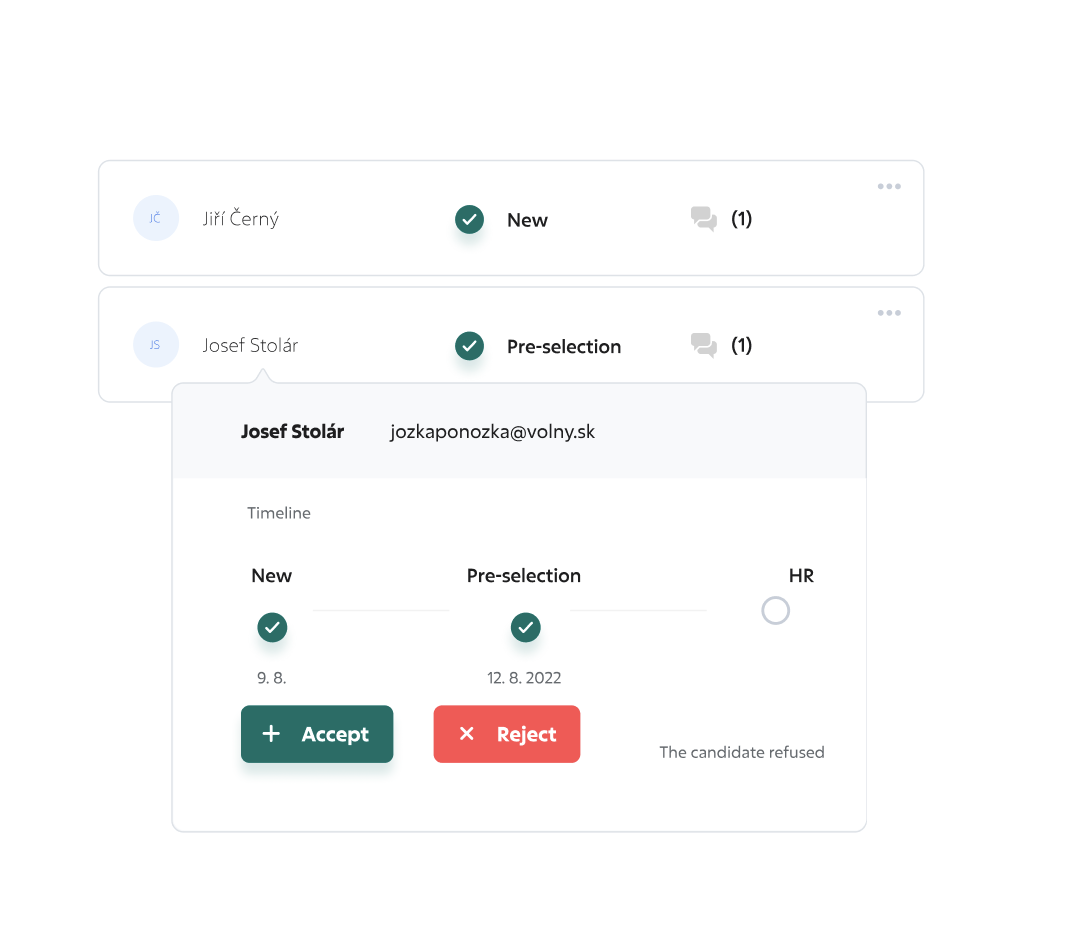Recruitment
What is recruitment?
Recruitment refers to the process of attracting, screening, and selecting qualified individuals for a job or position within an organization. It is a crucial aspect of human resource management and plays a vital role in building a talented and capable workforce.
What recruitment consists of?
Recruitment consists of several phases that we will discuss below. It’s important to note that they may vary company to company based on their specific needs, industry, and size. However, the core components of attracting, screening, selecting, and onboarding candidates remain consistent in most recruitment processes. When talking about recruitment, we recognize these stages:
- Job description: Before initiating recruitment, organizations conduct a job description to define the requirements and responsibilities of the vacant position. This analysis helps in determining the necessary qualifications, skills, and experience needed in a potential candidate.
- Sourcing: Sourcing involves identifying and attracting potential candidates for the job. This can be done through various channels, such as job portals, social media platforms, employee referrals, professional networks, career fairs, and recruitment agencies. The goal is to reach a wide pool of candidates and generate a sufficient number of applicants.
- Screening: Once applications are received, the screening process begins. This involves reviewing resumes, cover letters, and application forms to assess the candidates’ qualifications and suitability for the position. Screening may also include pre-employment tests, assessments, or preliminary interviews to further narrow down the candidate pool.
- Selection: In the selection stage, recruiters or hiring managers conduct interviews with the shortlisted candidates to evaluate their skills, knowledge, experience, and fit for the organization’s culture. Multiple rounds of interviews may be conducted, involving different stakeholders within the organization. Additional selection methods, such as reference checks, background checks, and psychometric assessments, may also be employed to gather more information about the candidates. After the selection process, recruiters or hiring managers make the final decision on which candidate to hire.
- Job offer: Once a candidate is selected, the organization extends a job offer, outlining the terms and conditions of employment, such as salary, benefits, start date, and any other relevant details. Negotiations may occur during this stage to reach a mutually agreeable arrangement.
- Onboarding: After the candidate accepts the job offer, the onboarding process begins. This involves introducing the new employee to the organization’s policies, procedures, culture, and work environment. Onboarding aims to help the new hire integrate smoothly into the organization and become productive as quickly as possible.
What to look out for when it comes to recruitment?
When talking about recruitment, it is crucial to consider several key factors. These include clearly defining job requirements, assessing the candidate pool in terms of quantity and quality, evaluating employer branding to attract top talent, reviewing the effectiveness of recruitment channels, and ensuring a well-structured selection process.
By paying attention to these aspects, organizations can enhance their recruitment efforts and increase the likelihood of attracting and selecting the right candidates for their positions.
The advantages of having a strong HR system with integrated ATS
When you finally find your dream candidates and offer them a job within your company, what’s better than converting them straight into users in your HR system? Obviously, including all the details you have collected during your recruitment process. At Sloneek, this can be done with just a few clicks thanks to its integrated ATS (Applicant tracking software).
On top of that, once you hire a new colleague, you may immediately assign them an onboarding checklist helping them get up to speed as quickly as possible. Among other things, our ATS admins also fell in love with a talent pool, a place where you can easily store contacts to promising talents you have collected on the way, and automated email templates.
We are here for you
Can we help you?
Our experts can answer any questions, guide you through the Sloneek system and help you transform your HR into a modern all-in-one solution.
- Superior onboarding
- Introduction of all functionalities
- Presentation and offer tailored to your HR
- Answer any questions







